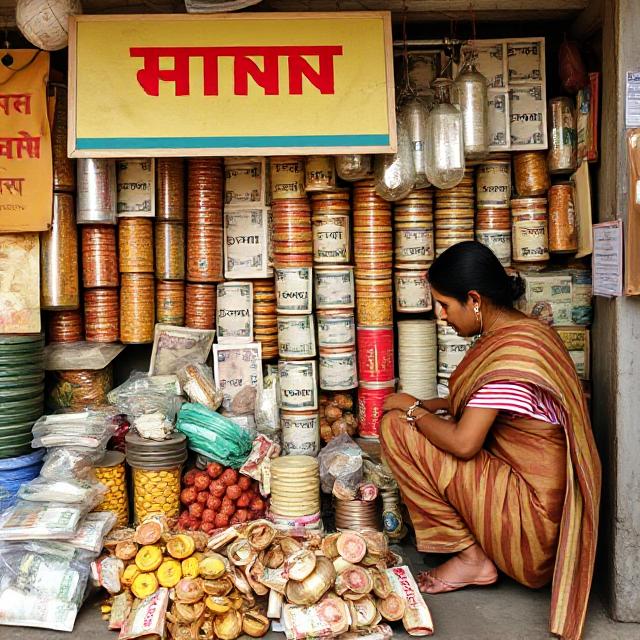Inflation Eases to 8-Year Low – Why Low Inflation Is Good, Causes, and the Ideal Rate for India
Introduction: India’s Inflation at an 8-Year Low
In 2025, India’s inflation rate touched its lowest level in eight years, marking a significant shift from the pandemic-era spikes and supply chain disruptions that dominated headlines in recent years.
For many people, “inflation” is just an economic buzzword that economists and policymakers talk about. But in reality, it impacts your monthly grocery bill, EMI payments, savings, and even your job security.
A low and stable inflation rate can be a sign of a healthy economy. But is low inflation always a good thing? And if inflation has dropped so much, what does it mean for India’s future growth?
What Is Inflation?
Inflation is the rate at which the general prices of goods and services in an economy increase over time. In simple terms, if inflation is at 5%, you can expect most prices to be about 5% higher than they were a year ago.
Two key ways inflation is measured in India:
- CPI (Consumer Price Index): Measures the average change in prices paid by consumers for everyday goods and services.
- WPI (Wholesale Price Index): Measures changes in prices at the wholesale level before goods reach consumers.
Why Is Having Low Inflation Good?
1. Protects Your Purchasing Power
When inflation is low, your salary retains more value over time.
Example: If you earn ₹50,000 a month and inflation is at 3%, your real purchasing power decreases very slowly compared to when inflation is at 8–10%.
2. Encourages Savings
Low inflation means money saved in banks, fixed deposits, or investments doesn’t lose value quickly. This motivates people to save and invest for the future.
3. Supports Long-Term Planning
Businesses can make investment decisions — such as building new factories, hiring staff, or launching products — when they can predict future costs more accurately.
4. Keeps Interest Rates Stable
With low inflation, the Reserve Bank of India (RBI) doesn’t need to raise interest rates aggressively, meaning loans for homes, cars, and businesses stay affordable.
5. Reduces Economic Uncertainty
Low inflation creates confidence in the economy, encouraging consumer spending and business growth.
What Does “8 Inflation” Mean?
When economists or news reports say “8 inflation”, they are referring to an 8% annual inflation rate — meaning prices have risen 8% compared to a year earlier.
It does not mean that prices have risen by ₹8 or 8 units; it’s a percentage increase.
In the headline “inflation eases to an 8-year low,” it means inflation is at its lowest point in eight years, not that it is at 8%.
The 8 Causes of Inflation
Inflation doesn’t come from one single source — it is the result of multiple factors interacting at the same time. The eight main causes are:
- Demand-Pull Inflation
- When demand for goods and services is higher than the available supply.
- Example: Festive season shopping rush leading to higher prices.
- Cost-Push Inflation
- When production costs rise (e.g., wages, raw materials), businesses pass these costs to consumers.
- Example: Rising steel prices increasing the cost of cars.
- Monetary Expansion
- Too much money in circulation reduces the value of money.
- Example: Excessive printing of currency.
- Imported Inflation
- Higher costs of imported goods due to currency depreciation or global price hikes.
- Example: A weaker rupee making imported crude oil more expensive.
- Wage-Price Spiral
- Higher wages increase production costs, which raises prices, leading to demands for even higher wages.
- Fiscal Policy Changes
- Increased government spending without matching supply growth can push prices up.
- Supply Shocks or Natural Disasters
- Events like floods, droughts, or pandemics reduce supply, increasing prices.
- Speculative Hoarding
- Businesses or traders hoard goods in anticipation of higher prices, creating artificial scarcity.
Is 4% Inflation Good?
For India, 4% inflation is considered ideal.
The RBI’s official target range is 4% ± 2%, meaning anything between 2% and 6% is acceptable.
Why 4%?
- Encourages moderate price increases to stimulate the economy.
- Prevents deflation (falling prices), which can slow economic growth.
- Keeps goods affordable while supporting investment.
Impact of Low Inflation
For Consumers
- Lower price increases mean better budgeting.
- Essential goods remain affordable.
For Businesses
- Predictable costs encourage expansion and hiring.
- Lower interest rates reduce borrowing costs.
For Government
- Less pressure on subsidies.
- Better control over fiscal deficits.
Can Inflation Be Too Low?
Yes. While low inflation is generally positive, too low inflation can be a sign of weak demand in the economy.
If people expect prices to stay the same or fall, they might delay purchases, which reduces business revenue and economic growth.
How RBI Controls Inflation
The Reserve Bank of India uses several monetary policy tools to control inflation:
- Repo Rate: Increasing this makes loans more expensive, reducing demand.
- Reverse Repo Rate: Encourages banks to park funds with RBI, reducing liquidity.
- CRR (Cash Reserve Ratio): Controls how much money banks can lend.
Global Context: Inflation Trends
In 2025, many economies are experiencing cooling inflation after pandemic-era highs.
- United States: Inflation moderating due to tighter interest rates.
- Europe: Energy price stabilization aiding low inflation.
- India: Benefiting from a good harvest, stable fuel prices, and global commodity price moderation.
Inflation FAQ – Questionnaire
Q1: Why is low inflation important for economic growth?
It keeps prices stable, encourages investment, and supports purchasing power.
Q2: What’s the difference between CPI and WPI?
CPI measures consumer prices, while WPI measures wholesale prices.
Q3: What’s a healthy inflation rate for India?
Around 4%, within RBI’s 2–6% range.
Q4: What happens if inflation is negative?
Deflation can slow the economy as people delay purchases.
Q5: How often does RBI review inflation?
Every two months during Monetary Policy Committee (MPC) meetings.
Q6: Can fuel prices affect inflation?
Yes, fuel is a major input for transport and production, affecting costs across the economy.
Q7: Is inflation always bad?
No — moderate inflation is essential for economic health.
Q8: How does low inflation affect home loans?
It usually means lower interest rates, making EMIs more affordable.
Conclusion: India’s Path Forward
India’s inflation easing to an 8-year low is a positive sign for the economy — as long as it remains within the ideal range. Stable prices help families manage budgets, encourage businesses to invest, and allow the government to plan better fiscal policies.
The sweet spot is around 4% inflation — not too high to erode savings, and not too low to stall growth. As global markets stabilize and domestic supply chains improve, India’s low inflation could be the foundation for sustained economic progress in the years ahead.












